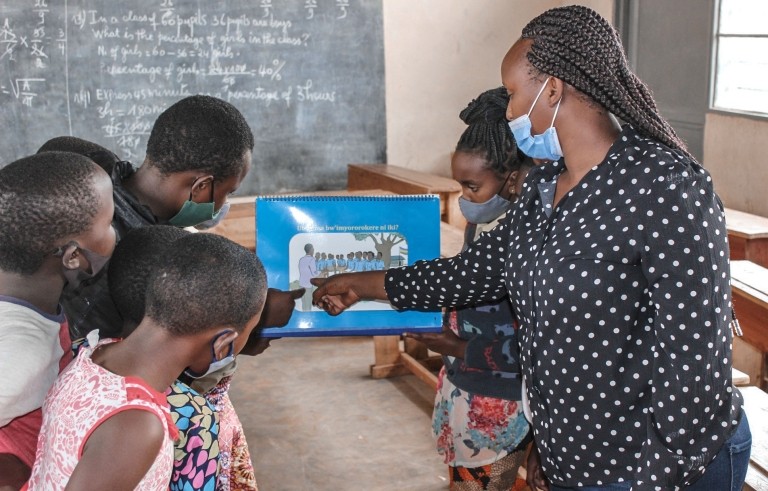News
The ACHIEVE project: Two years of progress toward HIV epidemic control

In 2019, with funding from USAID, Pact launched the ACHIEVE program, an ambitious, global effort to reach and sustain HIV epidemic control among pregnant and breastfeeding women, adolescents, infants and children. With our consortium partners, including Jhpiego, Palladium, No Means No Worldwide and WI-HER, we’ve made critical progress over the past two years, in clinical outcomes as well as in HIV prevention among the 62,000 orphans and vulnerable children (OVC) and caregivers we’ve served. Perhaps most critically, we are building strong local responses to HIV in communities around the world through ACHIEVE’s capacity development work.
Clinically, our goals are aligned with those of the global community – the 95-95-95 goals (95% of those living with HIV to know their status, 95% of those who know their status to be on treatment and 95% of those on treatment to be virally suppressed). We’re thrilled to be able to report that among the children and adolescents we are serving, ACHIEVE has surpassed some of these goals and is making strong progress on others. For more than 1,100 children and adolescents under the age of 18 who are living with HIV in Rwanda, South Sudan and Dominican Republic, we were able to track that 99% of them were on treatment – well above the 95% goal. Of those, we have documented viral suppression among 93% of them. (Rates are generally much lower across Sub-Saharan Africa.)
Another major focus of ACHIEVE is sustainability and building local responses to HIV in communities where we work. The breadth of our capacity development work is noteworthy. We’re supporting 256 capacity development activities across 14 local partners in five countries to deliver high-quality OVC and DREAMS services. We've assessed all of our local partners on capacity and performance using the Integrated Organizational and Technical Capacity Assessment (ITOCA) and OPI-Plus tools and collaboratively developed capacity action plans. For example, we’ve provided training and mentoring on leadership and financial systems, compliance reviews and data system strengthening. We're ensuring that these local organizations have the capacity to provide quality, client-centered services and to understand and implement USAID guidance.
There is wide variation among local organizations to conduct this work, so we are tailoring our interventions to individual organizations. To ensure that quality service delivery is maintained after our interventions, we work with organizations on business sustainability plans and with governments to ensure they can plan, fund and manage social welfare activities.
Building on more than a decade of OVC programming in Tanzania, we’re preparing several local organizations that we’ve worked with to take on direct funding after this year. Prior to the transition, ACHIEVE will directly support over 500,000 people through OVC and DREAMS programming in Tanzania by mid-2022. Applying lessons learned from capacity development in four other countries will improve our ability to support our subgrantees to transition to directly-funded local implementing partners capable of reaching half a million OVC families and AGYW.
In the coming year, we’ll be focused on bridging our community work with the efforts of clinical programs. Because of Covid-19 restrictions, we’ll be exploring enriched home-based interventions and virtual group activities for OVC and AGYW. Community caseworkers need our support to better engage with health facilities for joint case conferencing for children and adolescents living with HIV, and tracking their HIV clinical outcomes. We’ll also be seeing a continued focus on community-based HIV services, including caseworker follow-up for children and adolescents receiving multi-month dispensing of ARVs.
With our more ambitious targets for implementing community-based HIV prevention and response services for OVC and AGYW, we anticipate that the 95-95-95 goals are within reach. In 2022, we’re looking forward to increasing the breadth of OVC service delivery, particularly for children and adolescents living with HIV, scaling up our prevention curriculum, building on our success with PrEP under DREAMS, and expanding our capacity development support in more countries, for more partners, and ultimately benefitting more OVC and AGYW.
ACHIEVE – Adolescents and Children HIV Incidence Reduction, Empowerment and Virus Elimination – is a five-year global effort to reach and sustain HIV epidemic control among pregnant and breastfeeding women, adolescents, infants and children. The project is implemented by a Pact-led consortium of top global HIV/AIDS partners, including Jhpiego, Palladium, No Means No Worldwide and WI-HER.